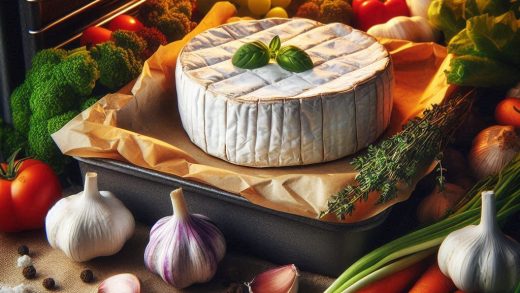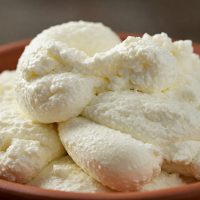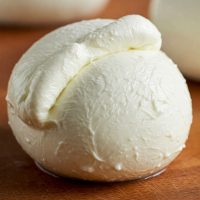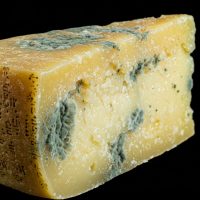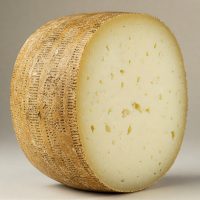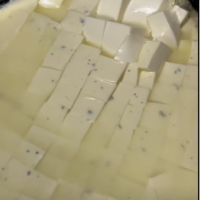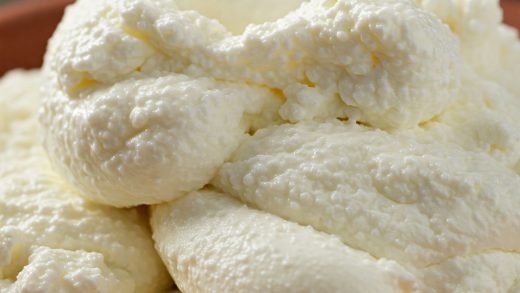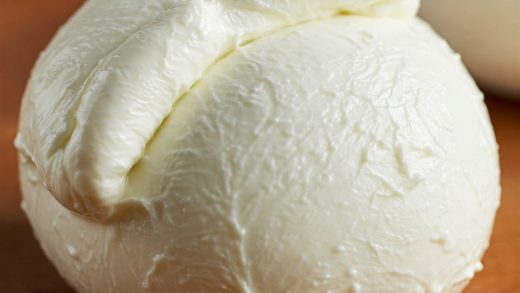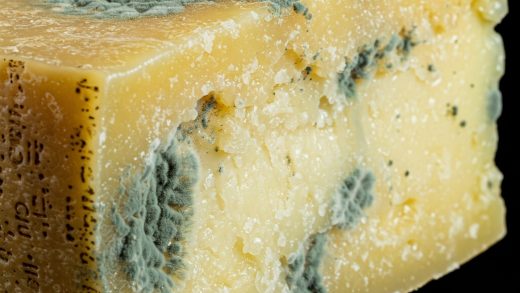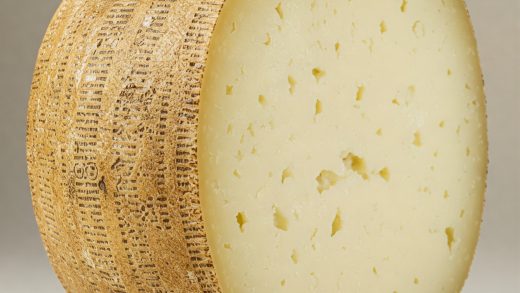You can eat Parmesan with some mold. If it’s a small, surface spot, you can cut away at least one inch around and below it. However, if the mold is widespread, fuzzy, or deep, you should discard the cheese entirely.
Picture this: you reach for your favorite Parmesan, only to find a patch of mold. A little worry sets in. Is it ruined?
Parmesan cheese is quite popular, and everyone enjoys its bold flavor. However, because it’s a natural food, it can sometimes become moldy. So, you might be wondering, “Can you still eat your Parmesan, even with mold?”
Well, here’s some good news: sometimes, you can. But, it’s not a simple yes or no. The answer depends on a few things. Parmesan is a hard cheese, which means it’s dense. That makes it harder for mold to spread all the way through it.
In this guide, you’ll explore when it’s safe to just cut away the mold and when it’s better to discard the whole block.
You’ll also learn how to keep your Parmesan fresh and mold-free. You’ll discover the tricks to safely enjoying your favorite cheese and avoid any unwanted surprises.
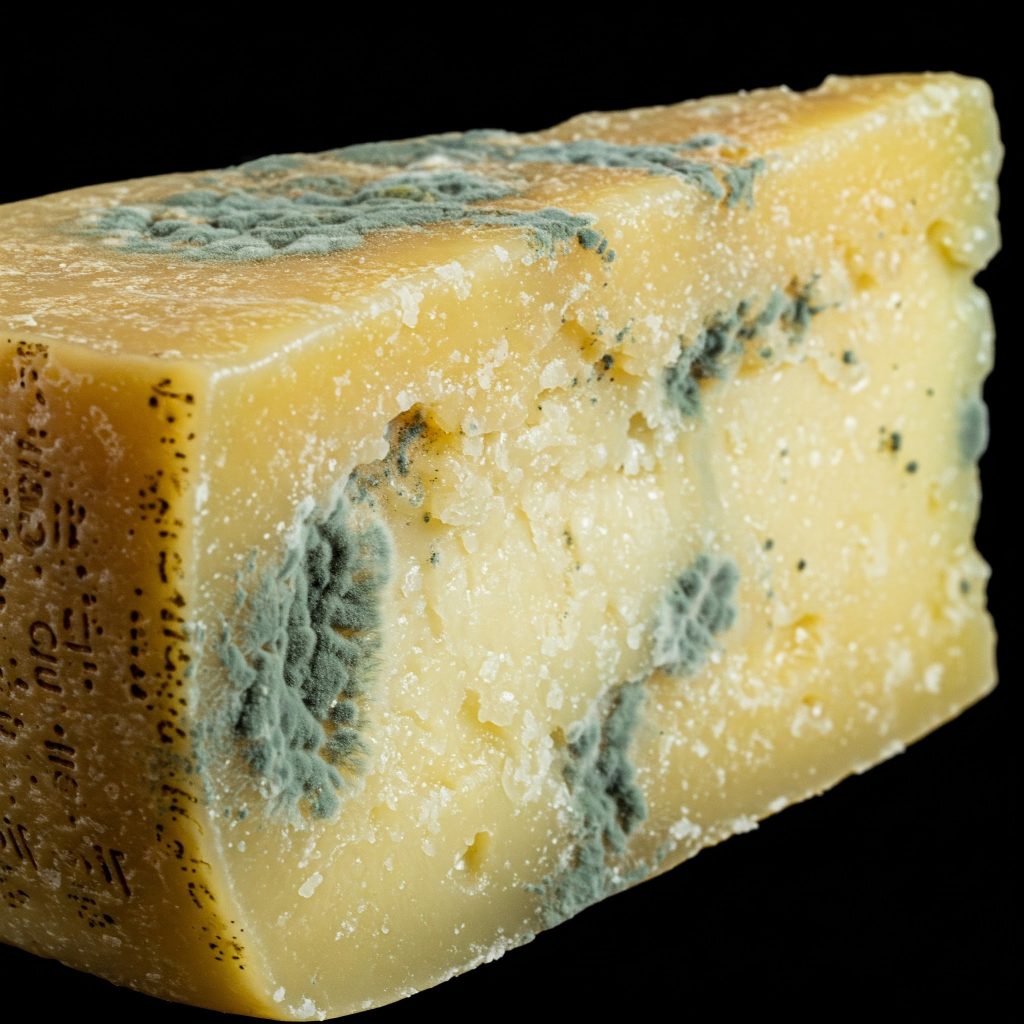
Why Parmesan Gets Moldy?
Parmesan is known for its hard, dry texture, which means it has a relatively low moisture content. This low moisture makes it less prone to mold growth compared to softer cheeses. However, even with its dryness, Parmesan can still develop mold.
Several factors contribute to mold growth on Parmesan. How you store your cheese plays a big role. If Parmesan isn’t wrapped tightly or kept in an airtight container, it’s exposed to air and humidity.
The moisture in the air can provide enough dampness for mold spores to take hold and grow. Also, if your refrigerator has high humidity, it can increase the chances of mold appearing.
Even small nicks or cuts on the cheese’s surface can provide an entry point for mold spores. Essentially, while Parmesan’s dryness offers some protection, it’s not foolproof. Proper storage is key to keeping it safe.
Types of Mold Found on Parmesan
When you spot mold on your Parmesan, you’ll notice it can come in different colors. The most common colors are green, white, and blue, but you might also see shades of gray or even black.
Green, white, or blue mold
These are often the most common types you’ll encounter. In the case of hard cheeses like Parmesan, these colors are often manageable. Generally, if the mold is just on the surface and the cheese is otherwise firm, you can likely cut away the mold and still enjoy the rest.
Black or fuzzy mold
These colors can be more concerning. Black mold, in particular, can sometimes indicate more dangerous types of mold that may produce mycotoxins.
Also, very fuzzy mold of any color indicates a more advanced stage of mold growth. If you see these types of mold, it’s generally safer to discard the cheese.
It’s important to remember that you can’t always tell if a mold is dangerous just by looking at it. So, when in doubt, it’s always best to err on the side of caution.
Is it Safe to Eat Moldy Parmesan?
So, you’ve found a bit of mold. Now what? Let’s get down to whether your Parmesan is still good to go.
The Hard Cheese Advantage
Hard cheeses like Parmesan have a real advantage when it comes to mold. Their density is what makes them special. Imagine the cheese as a tightly packed city.
It’s much harder for mold, which is like a tiny invader, to spread its roots deep into such a dense environment.
Because of this, the mold tends to stay on the surface, making it easier to deal with. The solid structure of Parmesan acts like a barrier, slowing down the mold’s ability to spread throughout the entire block.
When to Trim and When to Toss?
Knowing when to save your Parmesan and when to say goodbye is key. Here are some guidelines:
Trim it
- If the mold is just on the surface and in a small area.
- If the rest of the cheese looks and smells normal.
Toss it
- If the mold has spread widely.
- If the mold is fuzzy.
- If the mold appears to have gone deep into the cheese.
- If you notice any strange smells, or a slimy texture.
When trimming, it’s important to be generous. Cut away at least 1 inch around and below the mold. This helps to make sure you remove any mold that might have spread beyond what you can see.
How to Identify Dangerous Mold?
While some mold on Parmesan can be safely trimmed, other types signal it’s time to toss the cheese. Knowing the signs of potentially harmful mold is crucial.
Here’s what to watch for:
Fuzzy texture
Any mold that looks very fuzzy indicates a more advanced stage of growth, suggesting it may have penetrated deeper into the cheese.
Unusual colors
While green, white, and blue are common, be wary of pink, orange, or black mold. These colors can indicate types of mold that are more likely to produce harmful substances.
Deep penetration
If the mold appears to have spread deep into the cheese, rather than just staying on the surface, it’s best to discard it. You can often see this by cuting into the cheese, and seeing the mold inside.
Strange smells or slime
If the Parmesan has an off odor or a slimy texture, it’s a clear sign of spoilage, and you should not eat it.
The danger lies in mycotoxins, which are toxic substances produced by certain molds. These toxins can cause various health problems if ingested, ranging from mild digestive upset to more serious illnesses. Because you can’t always tell which molds produce mycotoxins, it’s always best to be cautious.
How to Safely Remove Mold from Parmesan? Step-by-Step Trimming Guide
If you’ve determined that the mold on your Parmesan is superficial and safe to trim, here’s how to do it properly.
Gather Your Tools
You’ll need a clean, sharp knife. A sharp knife will make clean cuts and prevent you from crushing the cheese, which could spread mold spores.
Have a clean cutting board ready.
Make the Cut
Carefully cut away the mold, removing a substantial portion around and beneath the visible mold. Aim for at least 1 inch around and below the moldy area. This ensures you remove any mold that might have spread beyond what you can see.
Try to cut the mold away in one large piece, rather than making small cuts that could spread the spores.
Clean Up
After removing the mold, clean your knife and cutting board thoroughly with soap and hot water to prevent cross-contamination.
Wrap the remander of the parmesan in fresh paper, or plastic wrap, and store it in an air tight container in the fridge.
Visual Aid
Imagine a block of Parmesan with a small green mold spot on one corner. Take your sharp knife and cut away a generous wedge, including the mold spot and a good inch of cheese around it. Discard the cut portion. The rest of the cheese should now be safe to use.
How to Inspect the Remaining Cheese?
After you’ve carefully trimmed away the moldy portion of your Parmesan, take a close look at the remaining cheese. This step is crucial to ensure you’re not consuming any harmful mold or toxins.
Here’s what to look for:
Visual Inspection
Check the cut surface and the rest of the cheese for any remaining signs of mold. Look for any discoloration, fuzzy textures, or unusual spots.
Pay close attention to the area just around where you cut. If you see any faint traces of mold, it’s best to cut away more.
Smell Test
Sniff the cheese. It should have its characteristic nutty, sharp aroma. If you detect any off smells, such as a musty or sour odor, discard the cheese.
Texture Check
Feel the cheese. It should be firm and dry. If it feels slimy or unusually soft, it’s a sign of spoilage.
When in Doubt, Throw it Out
If you have any doubt about the safety of the remaining cheese, it’s always best to discard it. Food safety is paramount, and it’s better to be safe than sorry.
Even if you’ve followed the trimming guidelines, you can’t always see or smell all mold spores or mycotoxins. If anything seems suspicious, err on the side of caution and avoid risking your health.
Preventing Mold Growth on Parmesan
Keeping your Parmesan mold-free is all about proper storage. Here’s how to ensure your cheese stays fresh and safe:
Wrap it Right
Parmesan needs to breathe a little, but it also needs protection from excess moisture. The best way to store it is to wrap it tightly in parchment paper or cheese paper. This allows some airflow while still providing a barrier.
After wrapping it in paper, place the wrapped cheese in an airtight container or a zip-top bag. This adds an extra layer of protection against moisture and mold spores.
Coolest Spot in the Fridge
Store your Parmesan in the coldest part of your refrigerator. This is usually the bottom drawer or the back of the top shelf. Consistent cold temperatures help slow down mold growth.
Keep it Away from Moisture
Avoid storing Parmesan near high-moisture foods, such as fruits and vegetables. The moisture from these foods can create a humid environment that encourages mold growth.
Also, make sure the inside of your fridge is not overly humid.
How to store parmesan cheese in the fridge and freezer?
Parmesan cheese, with its distinctively rich and nutty flavor, is a kitchen staple. To ensure you’re always enjoying it at its best, proper storage is key.
Here’s a breakdown of how to keep your Parmesan fresh in both the refrigerator and freezer:
Maintaining Optimal Humidity
The right humidity level is key to keeping Parmesan fresh. Too much moisture encourages mold, while too little dries out the cheese. The ideal humidity range for cheese storage is generally between 70% and 80%.
Humidity Control
If you live in a particularly humid area, or if your refrigerator tends to have high humidity, consider using humidity control packets.
These packets, often made with silica gel or clay, can help absorb excess moisture and maintain a stable humidity level in your cheese storage container. You can find these packets online or in specialty food stores.
Regular Inspection and Maintenance
Even with careful storage, it’s essential to regularly check your Parmesan for any signs of mold.
Frequent Checks
Make it a habit to inspect your Parmesan every few days. Look for any changes in color, texture, or smell. Early detection of mold can make it easier to trim away and save the remaining cheese.
Prompt Consumption
The best way to prevent mold growth is to use your Parmesan promptly. Enjoy it in your favorite recipes or sprinkle it on salads and pasta. The sooner you use it, the less chance mold has to develop.
If you have a large block of Parmesan, consider grating it into smaller portions and storing them separately. This can make it easier to use small amounts at a time and prevent the entire block from spoiling.
FAQs
Is mold on Parmesan cheese harmful?
Whether mold on Parmesan is harmful depends. If the mold is just on the surface of your hard Parmesan, you can generally cut away at least 1 inch around and below the mold and eat the rest. However, if the mold is widespread, fuzzy, or deep, it’s best to discard the cheese, as some molds can produce harmful mycotoxins.
How to tell if Parmesan is bad?
You can tell Parmesan is bad if you see mold (especially fuzzy or widespread), notice an off smell (like ammonia or sourness), or feel a slimy or sticky texture. Hard Parmesan should be firm and dry. If it’s discolored or has an unusual appearance, it’s also best to discard it.
What should I do if I accidentally ate mold?
If you accidentally ate a small amount of mold, you’ll likely experience mild symptoms like nausea or vomiting. 1 However, if you develop severe symptoms, such as difficulty breathing or a high fever, seek medical attention immediately.
Conclusion
In short, when dealing with moldy Parmesan, remember the golden rule: trim or toss. If the mold is superficial, you can carefully cut it away.
However, if it’s widespread, fuzzy, or shows any signs of unusual colors or smells, it’s best to discard the cheese. Proper storage is your best defense against mold, so wrap your Parmesan tightly and keep it in a cool, dry place.
Food safety is paramount, so always err on the side of caution. If you’re ever unsure, it’s safer to throw it out. Now, share your favorite Parmesan storage tips with others.


